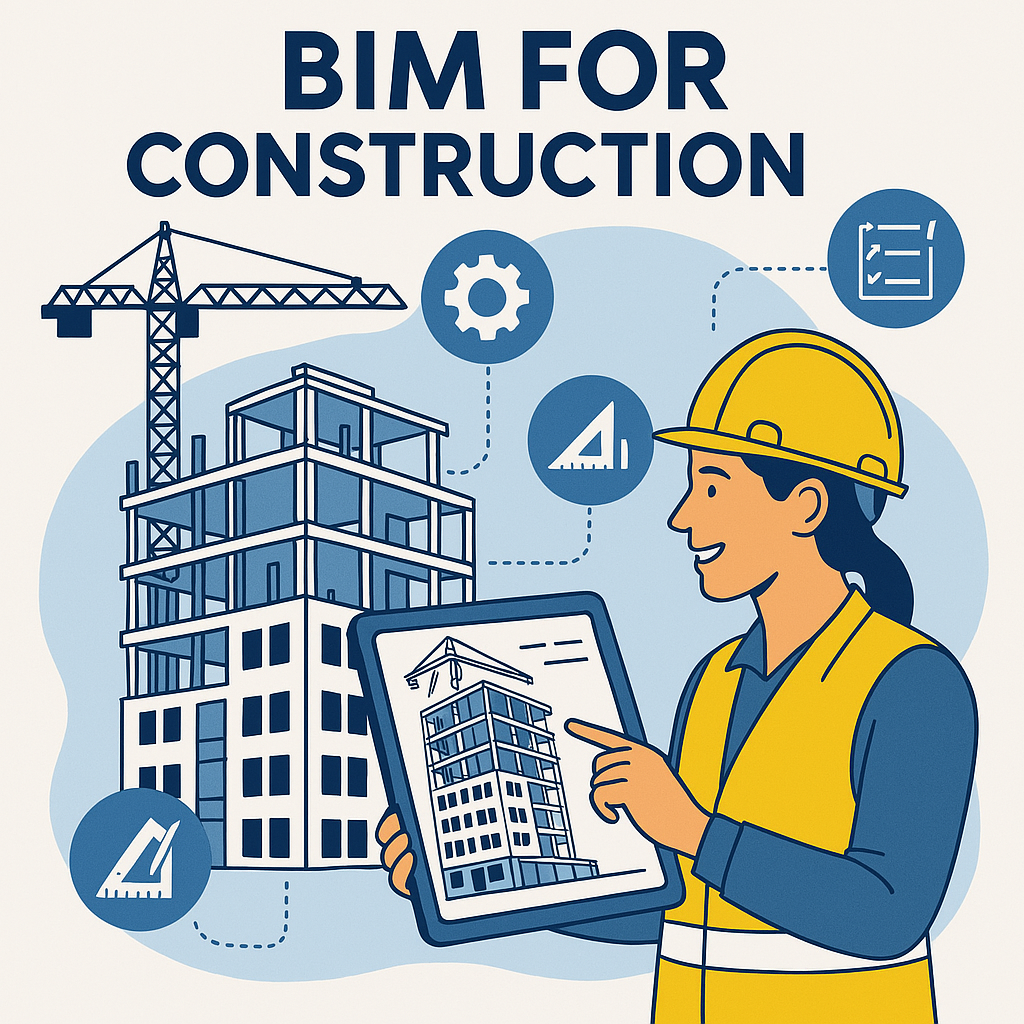
Unlock BIM ROI: Better Planning, Efficiency and Lifecycle Value
Share
In 2025, Building Information Modeling (BIM) is no longer optional for major commercial, institutional, and infrastructure projects. It is a strategic platform that improves collaboration, reduces costs, accelerates timelines, enhances build quality, and delivers long-term value. Below are the eight most impactful benefits of BIM, based on real-world data and proven outcomes.
1. Enhanced Collaboration and Clear Communication
BIM centralizes all project data in a shared digital model accessible to architects, engineers, contractors, and owners. With everyone working from the same model, misunderstandings are significantly reduced. Updates are synchronized across the team in real time, which accelerates coordination between design, procurement, and construction. Field teams can access up-to-date drawings and revisions via mobile devices, reducing the risk of outdated information reaching the job site.
This streamlined communication eliminates silos and costly missteps, turning project coordination into a more seamless operation.
2. Proactive Clash Detection and Issue Resolution
BIM enables the identification of spatial conflicts, such as ducts intersecting beams or pipes colliding with conduits, before construction begins. Teams use automated clash detection tools to highlight and resolve potential issues in the virtual model.
This proactive coordination can reduce rework by as much as 40 to 90 percent, saving time and controlling budget overruns. The result is fewer on site disruptions and smoother execution.
3. Accurate Cost Estimation and Waste Control
With 5D BIM, cost information is embedded within the model. Users can generate precise quantities, validate costs, and simulate financial scenarios instantly. This model driven costing process reduces guesswork and aligns budgets with evolving design conditions.
Studies have shown BIM enabled estimates typically reduce overall construction costs by around 5 percent, while increasing labor productivity by up to 25 percent. Material waste is minimized when orders reflect actual model quantities, not inflated estimates or visual guesses.
4. Improved Scheduling and Construction Sequencing
By linking time data (4D) to the building model, BIM enables teams to visualize construction sequences, from excavation through final systems. Logistics for cranes, material staging, and workforce deployment are planned virtually before site execution.
Projects leveraging BIM see schedule improvements of 5 to 20 percent, with fewer delays and better resource utilization. Simulating workflows ahead of time avoids bottlenecks during construction.
5. Higher Quality, Safer Job Sites
BIM’s detailed models support quality control by verifying component coordination beforehand. Teams can test installation sequences and visualize safety zones before crews arrive on site.
With early hazard identification and visual risk planning, construction sites become safer, and installation errors drop. The result is higher quality builds and fewer accidents in the field.
6. Lifecycle Value and Facility Operations
The BIM model does not expire when construction ends. It becomes the foundation for digital twins and facility management systems. Owners gain instant access to information on building components, warranties, and systems.
By supporting predictive maintenance and space utilization planning, BIM reduces operational costs and improves lifecycle value. Industry data show that every dollar invested in BIM design can pay dividends long after project completion.
7. Sustainability and Environmental Savings
During early design, BIM supports energy modeling and material optimization. Teams simulate energy use and carbon emissions, allowing selection of sustainable materials and systems.
Construction waste is significantly reduced, and lifecycle carbon emissions can drop by 30 to 65 percent when BIM is used strategically in decision-making. BIM also supports circular economy goals through better material tracking and reuse planning.
8. Measurable Productivity and ROI
Surveys reveal that over 70 percent of construction professionals see measurable outcomes from BIM deployment. Among advanced practitioners, more than 80 percent report positive return on investment. Labor productivity gains of up to 25 percent are common, and project performance indicators improve across the board.
Standardizing BIM workflows, libraries, and templates helps firms scale adoption and sustain benefits across multiple projects.
Summary Table
Collaboration: Unified data model eliminates miscommunication
Clash Detection: Reduces field rework by 40–90 percent
Cost Estimation: ~5% cost reduction; ~25% increase in productivity
Scheduling: 5–20 percent faster project timelines
Quality & Safety: Improved coordination reduces errors and hazard risks
Lifecycle Operations: Model supports predictive maintenance and efficient operations
Sustainability: 30–65 percent reduction in lifecycle emissions
Productivity and ROI: 70+ percent see improved outcomes; 80+ percent report positive ROI
Practical Takeaway
BIM is not just software. It is a methodology that transforms construction into a data-first, digital-first process. From early design coordination to long-term operations, BIM guides smarter decisions, lowers risk, and enhances building quality.
If you are working on commercial buildings, institutional facilities, or infrastructure projects, BIM adoption is a strategic imperative, not an option.
